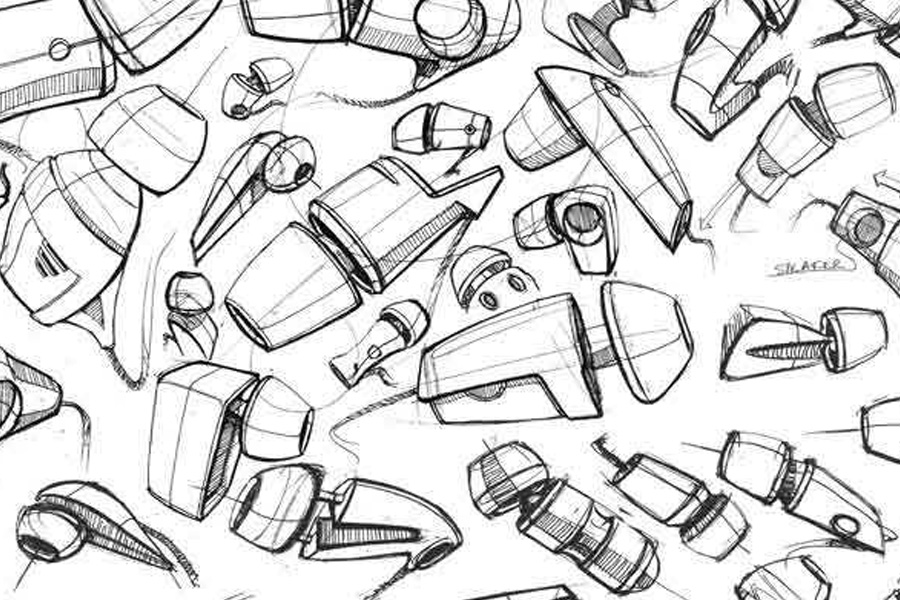Titanium plastic processing industry is a high energy consumption industry. Hot rolling, annealing and heat treatment operations require high energy consumption. Reducing energy consumption in titanium processing and production is conducive to reducing costs and saving energy. The way to solve the problem of excessive energy consumption in the production of titanium industry is mainly to rely on technological progress, improve process technology, develop efficient energy-saving processes, develop automated control technologies, and develop energy-saving technologies for titanium processing. Titanium plastic processing production technology realizes large-scale and continuous, the production process realizes mechanization and automation, and each process operation adopts computer control to improve labor productivity. The forging of large-scale titanium alloy forgings abroad adopts 45kt or 75kt hydraulic press.
Plastic processing of titanium and titanium alloys has the characteristics of large deformation resistance, poor plasticity at room temperature, high ratio of yield limit and strength limit, large springback, sensitivity to notches, deformation process easy to stick with the mold, and easy to adsorb harmful gases when heated. The plastic processing of titanium is more difficult than titanium and copper. The processing technology of titanium and titanium alloys must consider these characteristics. Titanium and titanium alloys are plastically processed, and the processing size is not limited, and they can be mass-produced. Plastic processing is the dominant method in the processing of titanium materials. Most titanium products are produced using this method.
At present, the traditional methods of titanium processing mainly include plastic processing, casting and powder metallurgy. The process of titanium plastic processing is to melt cast titanium sponge into an ingot, and then process it into titanium material. Plastic processing methods include forging, rolling, extrusion, drawing, stamping, spinning, etc., through these plastic processing methods can be processed into various shapes and sizes of plates, tapes, strips, foils, tubes, rods, Types, lines, forgings and stampings and other products.
Energy saving
From titanium and titanium alloy ingots to finished parts, the yield is only 10%-20%. Therefore, the recycling of residual titanium and its alloys has become the key to reducing costs and expanding applications. The sources of waste titanium and residual titanium are very wide. The waste titanium produced by titanium ingots (cutting heads, trimming and chipping scraps) accounts for about 5%; the residual titanium produced by processing into materials (edge scraps and scraps) accounts for about 40% ~60%; residual titanium (material head, corner scrap) produced by processing titanium materials into titanium products accounts for about 50% to 75%; waste titanium products are also a source.
Due to the large amount of waste and residual titanium, comprehensive utilization is promising. Therefore, some countries have established special scrap metal recycling companies, specializing in the comprehensive utilization of waste and residual titanium, using special equipment and technology, and large-scale, highly automated recovery of waste and residual titanium.
In the recycling of waste and residual titanium, it is especially necessary to strengthen the management of waste and residual titanium, and do not mix waste and residual titanium with different oxidation levels. This is convenient for the treatment of waste titanium according to different categories according to the following four conditions:
- (1) Uncontaminated residual titanium, including processed corner scraps and titanium scraps, large in quantity and good in quality, should be used as an additive for smelting titanium ingots, and extruded into titanium blocks with titanium sponge, which can be reduced Processing cost
- (2) Block waste titanium sponge, waste titanium head, and titanium scrap, according to their purity and composition, can be used as alloy additives in the ferro-titanium industry or as raw materials for making titanium powder;
- (3) Titanium powder and other external titanium powder should be used as deflagration agent in the pyrotechnic industry, and can also be used as additives in the aluminum processing industry and raw materials for powder metallurgy titanium products;
- (4) Titanium scraps and waste titanium blocks with many mixtures or impurities can be processed into high titanium iron, such as 70 titanium iron (70% titanium). With the increase in the demand for high-titanium-iron alloys by additives in the ferro-titanium industry, high-titanium-iron alloys that use waste titanium as the main raw material for production are highly welcomed by the market. At present, the annual output of high-titanium iron produced from waste titanium has reached more than 10,000 tons worldwide.
